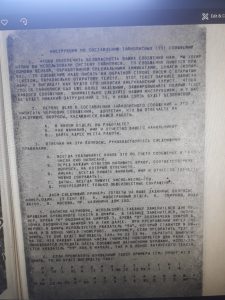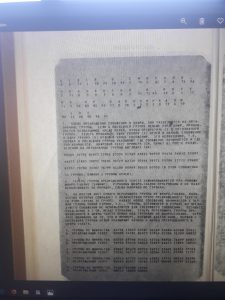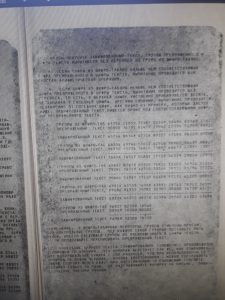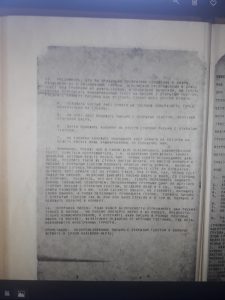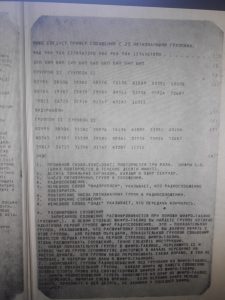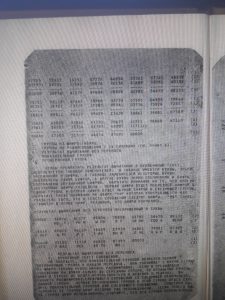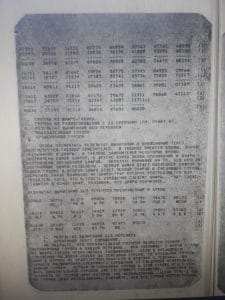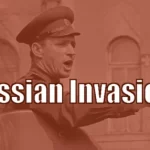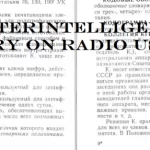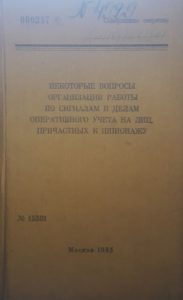
Introduction
From 2019 onwards the Latvian National Archive offers access to various KGB documents. The author had already previously shown the very detailed efforts of the Latvian KGB counterintelligence to monitor and study the CIA and BND numbers stations broadcasts, or what they called – “one directional communications”.[1] These are one of the most definitive archival sources which prove that foreign intelligence actively used shortwave in the USSR and that the KGB was aware of it. The documents showed that the KGB had monitored these broadcasts from at least 1978, but the files spoke very vaguely if the monitoring effort led to any apprehension and capture of a foreign agent. We, however, know that there were such cases like Alexander Ogorodnik[2], and others where the use of shortwave signals was determined.
The Latvian National Archive digitized operational cases and also special KGB training manuals. These manuals were published for inner agency use and were never issued in public because they contained secret information. One such manual called “Некоторые вопросы организаций работы по сигналам и делам оперативного учета лиц причастий в шпионажу” published in 1985 by KGB of F. E Dzherzhinsky in Moscow.[3] (A few issues on organizing work on signals and cases recognizing persons taking part in espionage”). The manual was credited to major general A. A Fabrichinikov and colonel V.V Holopov The word “signal” in the title does not mean just a radio signal. In the KGB terminology “signal” meant a sign or report of a foreign intelligence or anti Soviet activity. If this “signal” indicated that the person is taking part in espionage he had to be investigated and evidence to be collected. The manual showed various historical cases as examples on how to apprehend and capture a foreign agent.
Who was Anatoly Filatov?
One such case was called” Case on Filatov”. Starting from page 41 the manual examples this case as one of the cases where radio communication was used between the agency and agent and how it was uncovered by counter intelligence. Anatoly N. Filatov was according to a 1981 Washington Post report sentenced in 1978 to be shot by a firing squad, though the sentence was commuted later to 15 years in prison.[4] A New York Times article in 1980 had rumored that A. Filatov was the same “Trigon” who is now commonly known as Alexandr Ogorodnik. The article states that A. Filatov was suspected of being discovered by the KGB counterintelligence and forced to send the CIA false information. The reasoning behind this hypothesis was that in 1977 “Trigon” went dark at the same time as A. Filatov sent a very questionable cable about Secretary of State Henry Kissinger, where he questioned the “bargaining position of president Carter” during the 1977 missile control talks.[5] Alexander Ogorodnik aka “Trigon” died on June 22 1977 after swallowing cyanide pills during a KGB break in.[6]
David E. Hoffman, author of the book “The Million Dollar Spy” states that Filatov was arrested during a “car toss”, where a package is quickly swapped between two passing cars.[7] Russian author Aleksandr Kolpakidi in his book “The GRU Empire” writes that Filatov was born in 1940 in the Saratov district, joined the GRU in 1973. (GRU – the Main Intelligence Directorate – Soviet military intelligence agency) and served in Algiers where in 1974 he established contact with the CIA. Filatov had stated that his involvement with the adversary CIA happened as a result of being lured into a honey trap with a woman called Nadia, as similar happened to A. Ogorodnik. Either so or A. Filatov himself decided to become a double agent and started meeting CIA agent Edward Kane. In 1976 A. Filatov was called back to Moscow and the CIA had instructed him to receive shortwave coded broadcasts in German numbers from Frankfurt near Main, the broadcasts were to be carried out twice a week. Operative broadcast would be started with uneven numbers and training with even numbers. The broadcasts on precaution were carried out before A. Filatov returned to Moscow. The return message was to be carried out in a dead drop in an area near Dinamo sports stadium.
As the author states the coded messages contained such instructions: “Do not contain yourself with gathering information within your service only. Gain trust of friends and relatives. Visit them at their workplaces, their homes, invite them to restaurants, and with careful, clever talking gain information you could not get yourself”[8]. The instructions also stated that the agency is not just interested in documents with “Top Secret” on it but also common information about his department and situation in it. Filatov was arrested on the 2nd of September 1977. As A. Kolpakidi states he was first sentenced to death in 1978 but instead was sent to labor camp 389/35 near Perm. In 1989 Filatov was visited by French journalists to whom he stated that he took very high stakes risks in his life which he lost and now naturally pays for it.
After release he demanded compensation from the US embassy, but was denied as a non citizen. The Russian TV company TV Center in 2014 made the documentary series “Завербуй меня, если сможешь” (Contract me if you can) and featured the A. Filatov case showing various pictures of him and accounts from his colleagues, such as Anatoly Tereshchenko, colonel of the military counter intel. Tereshchenko stated that if A. Filatov had come to the GRU and reported that he was lured into cooperation with the CIA, they could outplay the CIA, and Filatov would be a hero.[9] What became of Filatov after his release, is not known, the TV documentary showed his picture after his release. Possibly A. Filatov is dead now.
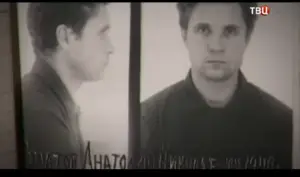
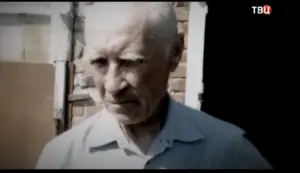
What will follow is a translation from Russian to English from the mentioned KGB manual, where the case about Filatov is described as an example of apprehending and capturing foreign spies who use radio signals and codes. With photo scans of included photo evidence.
Case on Filatov[10]
Start of the original translation
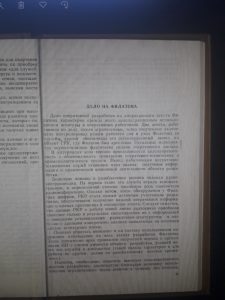
The case regarding American agent Filatov is particularly useful for agency and operative workers. Two agents who worked on this case had limited, but clear objectives: one controlled his work shifts, the other one lured him to a position within a GRU object (facility), where he was arrested. Secondary events were mostly carried out by the workers of the operational staff.
In the case materials the use of operational technical and criminal resources is very clearly displayed. The workers of the operational services had a clear objective: gain information about practical espionage activity.
A lot of support for apprehending the spy was provided by the GRU radio counterintelligence. During the first phase of the operation the counter radio intelligence played a helpful, but mostly backseat role, in terms of gaining radio information. However, after Filatov was discovered in possession of multiple ciphers the RCI[11] played the most active role in gaining information about the adversary’s plans for their agent. It must be asserted that the RCI data about the new communication line only gained importance after comprehensive analysis about known agents and data gained from agency postal communication lines.
It is useful to take note of the surveillance tactics used to monitor FIlatov, during all phases of the operation. Here the artistic use of surveillance, determination of the personality of the object, working out on his work conditions and living place (such an approach is essential for any future attempts for apprehending an adversary agent).
Finally it’s important to point out the very high level of secrecy is required to successfully carry out the operation, with minimal numbers of agents and operative staff workers as reglamented by the authority of KGB, and adjusted fully to the set parameters.
All this taken to an account assured that the case was carried out in highest quality the tasks were carried out decisively.
“””
The investigation into the incoming signals, and the timeline for the search for the CIA agent Filatov took place in the following order.
At the start of 1977 the second chief directorate of the KGB had received data that led to the belief that a new agent from American intelligence had become active within Soviet Union.
On January 21 and February 6 1977 the RCI had detected the transmission of operational (combat)[12] radiograms on the communication line sent from Frankfurt CIA radio center, that had appeared already in the first half of 1976.[13] With that the general reception of the radiograms was possible within the central part of European side of the USSR. [14]
In this same time frame espionage activity within CIA station inside the US embassy in Moscow, was observed to have increased, showing signs of preparing for creating operational dead drop communications, it was determined that these activities could not be part of the ongoing cases and operational games.
It was expected that the agent, after receiving operational radiograms, will likely make contact with the Frankfurt radio center using postal telegraph, telephone, dead drop, radio transmission or make a meeting with his handler, usually from US diplomatic service.
Taking this into account together with Operative-technical and Seventh authority of the KGB, extra measures were made to control the agency channels within Moscow and eavesdrop on CIA actions.
On February 9 1977 a postal parcel coming from Moscow to the US, a suspicious letter was identified which had signs which made its purpose likely being for espionage uses. This letter had a date indicating it was sent on February 7 and was written in the in English language “from English tourist”[15]. By using a physical-chemical method on the blank side of the letter, a cipher of 353 five number groups was found. The experts concluded that the message was made by a person who knows Russian language, while the paper and technique was created by US intelligence. The open text analysis showed that it was made before in the CIA station center.
The interception of the espionage document confirmed that a new CIA agent has appeared within the USSR that KGB is not yet aware of. The letter was then sent to its destination to observe the activity further. The letter, its address, cipher and open text were all photo copied and added to the core case file.
With these circumstances an operational case was started within Second authority and Operational, who started discreetly carrying out the operational tasks.
The KGB chiefs had placed the task for the investigators to apprehend the spy as fast as possible. The plan of action included the main options and course of action, main points where most efforts should be focused and which actions should be done first. Considering this, the versions for investigation were made.
Based on the case analysis, also considering the additional information indicating the “American handprint” it was considered that the object (suspect) was contracted and trained by Americans abroad, perhaps even lived there for some time. In parallel the version that object (suspect) was contracted by Americans at home and never left the USSR was also checked.
To determine the main and most likely scenario it was required to sort out categories of soviet citizens usually traveled abroad, once identified they must be added to the sphere of investigation and checked if their travel fit the timeframe.
Taking this into account, the investigators also considered that US intelligence might attempt to interfere with efforts to find the agent, often activating the communication lines many months before the agent returns to USSR.[16]
In this case it was determined that the observed communications line was tied to the agent in search as he had responded to the radio message with a letter a day after and the letter was made in advance. In so the check was done on all soviet citizens who were outside USSR and returned in 1976 and lived in the area of the CIA radio broadcasts.
Soviet citizens leaving USSR as tourists, members of delegation and other channels of short timed trips were left out of the sphere of investigation[17] (excluding people already on the signal cases of espionage). It was also required to check on signal cases[18] marked “homeland treason” and “espionage” older than five years in the archive as well as a list of constant foreigners and non-citizens living in the USSR.
Since the permits to travel abroad were issued through ministries and state agencies, the effort was made to collect samples of handwriting from the soviet specialists within MID (Foreign Affairs), MVT (International War Tribunal), GKNT (State Committee on Science and Technology), GKJeS (Ministry of Foreign trade), GRU of Chief Staff of the USSR and few other state establishments.
Very thorough control of the postal-telegraphic correspondence was continued. Documents were picked out by a specially designed method to detect signs of being an espionage letter that a US agency used during this timeframe. All documents were subjected to thorough technical control and were checked for possible signs of hidden text.
The identification of hand writings of unknown authors of international and union only documents susceptible to espionage was carried out. Special attention was directed towards people within Frankfurt broadcast range.
Systematic analysis was made on surveillance materials about actions of the official US CIA residents within Moscow as well as people being involved in signal cases about espionage activity. Within analysis the occurrence of transmission of double sent US postal documents and “mistaken calls” to the apartments of the US diplomats[19] as well as the data on Frankfurt radio center broadcast schedule.
On February 25, March 4 and March 11 1977 as observed by the KGB institutions, new one-sided messages were sent, and on March 22 the service of PK OTU of KGB[20] caught a letter addressed to the USA with 194 five letter cipher groups. The experts concluded that the author of this message was the foreign agent they searched for. Both documents were sent from central Moscow and went from the same postal service center.
The comparably low interval in sending the postal message and one sided radio messages, as well as the actions of the US spy station residents, made assumption that the spy was a citizen of Moscow. Because of that the main efforts were placed to locate the spy within Moscow and its suburbs. Special focus was placed on checking driver cards that were kept in the General Administration for Traffic Safety. It was considered because it was often observed that persons who spent significant time abroad could afford a new car.
To gain some information about soviet citizens who spent time abroad, the literal cases[21] of the authority “K”[22] about Soviet colonials within capitalist and non aligned states. As a method of detailed study of the postal routes where spy letters were sent, the surveillance teams did throughout monitoring of the postal reception points.
During March-May 1977 by searching the spy who sent the coded message, the signatures of more than two thousand people were checked. In result a few persons were placed forward, with similar signatures and biographies that could indicate that they could have sent the intercepted messages. Special attention was drawn by members of GRU General Staff of the Ministry of Defense Filatov, whose signature was most similar with the signature sent by the spy. The experts concluded that signature analysis shows that FIlatov was likely to be connected to the coded postal messages sent on February 9 and March 22 1977.
By the information received from the Third Chief Directorate of the KGB[23] Filatov A.N born in 1940 a Mordvin[24], member of KPSS[25] a major, a scientific assistant of the GRU, after finishing faculty of fast training for military translators was sent to work at GRU. From 1965 to 1968 he was in Laos as translator within the USSR embassy for military envoys. After returning to his homeland, he worked in GRU training center and during this time he finished the French department in the Military institute of Foreign languages and in 1973 was sent as translator for military envoys to Algeria within the USSR embassy and worked there till September 1976. The Third Chief Directorate reports characterized him as a weak, dependent and greedy person.
The Filatov’s arrival in Algeria in a period when, according to data, the American foreign intelligence actively tried to recruit Soviet citizens and at time of his return to USSR, when new communication lines became active and the times of operational radiograms increased suspicion.
Further handwriting analysis from experts from Third Chief Directorate showed that the letters with ciphers with large parts of text written by him made the conclusion that the Filatov was most likely suspect for handling and sending these letters.
By taking all evidence into account, the operative phase against Filatov was started with close cooperation with the Third Chief Directorate.
Plan for agency-operational events was first to determine if the object was indeed connected with the foreign intelligence, by uncovering and documenting his espionage activity.
With this decision it was decided to test a version that Filatov is working with American intelligence to pass them secret information, that between spy and US intelligence exists a radio, postal and possibly dead drop communications and telephone lines and determine where the materials for radio communication, cipher letters are kept – in his house, workplace or other.
One of the main objectives was to infiltrate Filatovs apartment to add tracking devices and carry out covert search to find objects indicating espionage activity. However, it was impossible at first as the entry door had a difficult lock of foreign origin. To compensate this issue a new optic surveillance system “Negus” with 300-400 meter range that was capable of detecting, when objects entered the house, what he did in the stairway and some of the main areas of his apartment. Special attention was given to the broadcast times of the Frankfurt broadcast center.
The observed one made no special actions for a long time. At last in June 1977 during another adversary radio broadcast, suspicious Filatov actions were detected with observing him using a portable radio receiver and making a recording.
Attempts to infiltrate Filatovs apartment continued and agents delivered information that during his scheduled vacation, the object was planning to do some repairs in his apartment, while his wife planned together Filatovs with children to visit parents in Saratov district. It was planned to create Filatovs key copy by using the ones that his wife took with her on trip. Do do this in the same train berth where she was riding, two KGB agents were placed who were tasked to make good relations with Filatovs wife and gain access to her keys.
A long and careful preparation was done for proper covert search in Filatovs apartment. To make things difficult the Filatov had good relations with his neighbors who lived in an apartment above the Filatovs, and were transferred to another location by giving good reasons. The apartment above him was taken by KGB workers and it was used for control and surveillance. The observed object failed to notice any suspicious activity.
When Filatov was at work, the operative workers infiltrated his apartment and installed technical surveillance resources for video surveillance and photography.
To keep the operation covert in his workplace and other locations, the surveillance was done by other methods.
To intercept the agency letters sent by Filatov or to detect if he has made new places to hide or send documents, a event called “Ruby” was carried out in his work cabinet, his living place and his mailbox by using a special chemical agent.
All the daily routes of American intelligence known associates and places where the counterintelligence made checkups to determine if there is a sign of secret communications.
Within the postal traffic the system “Krug” was initiated to control and detect all incoming postal traffic from the object. Also the checking of the foreign document traffic was monitored to see if there are some signs of Filatovs involvement.
During the creation of the operation, it was decided from a large list of people who should take part in the operation. The outside surveillance was carried out from fixed watch posts while inside surveillance was only carried only in special occasions such as detecting objects entering the communication line with the adversary agency.
At the start of August 1977 during the event “O” and “T” that at 21:00 object brought magnitola (radio with built in tape recorder), special metallic attachment in size of 25×25, automatic pen, three pencils, and pages from students’ notebooks. Adding the attachment to the radio, tuning to the right wave, within 14 minutes he wrote down with pencil five number groups, given in German language and single handedly recorded the message.
When Filatov received a message from the radio center, he turned on the radio receiver as well as the tape recorder, and cipher notebook that he had hidden in storage vault in the kitchen placed in metallic box disguised as match box with size of 25×70 and started to decipher the message text. It was noticed that he had issues for prolonged time to understand the text, had to replay the recorded message on tape recorder many times over and rewrite the message. On 23:00 Filatov ended the decoding of the message and made some kinda notes in the notebook, burned the text of decoded numbers and hid the cipher book inside a storage vault.
A few days later Filatov brought a board which was used as a shelf in the toilet. Using a drill and other tools he set up a stash in the narrow side of the board to store his smaller spy equipment.
By constant monitoring it was possible to fully document the criminal actions of the object. As sanctioned by the KGB, during the suspect’s work hours, his hidden stash was secretly inspected. Inside it the instruction on how to decode was found, cipher blocks, secret copy paper, list of places where to carry out espionage actions, and special radio modification to be able to receive agency radio messages.[26] All the contents of the stash were photographed and carefully placed back.
The photocopies of the cipher notebooks allowed readers to read the content of the radiograms and also Filatov’s sent coded postal letters. It turned out he had sent them some confidential information known to him from GRU and how to obtain rights for accessing secret documents .
At the start of the operation it was vital to limit damage made by Filatov to the Soviet state. Because of this within the closed trusted ranks of the Third Chief directorate it was discreetly determined on what kind of secrets the object in question could gain access to and take necessary actions to localize the threat of Filatov giving secret data from GRU to abroad.
From the uncovered evidence it was also clear that Filatov and American intelligence has dead drop channel communication. It was understood from the radiograms that US intelligence was unable to carry out a dead drop exchange earlier and now plan to carry out at Kostromskaya naberezhnaya in Moscow either in September 2, 16 or 7 October 1977.
During technical observation it was detected that Filatov had invited guests to his colleague and made other observations of his actions.
During the technical control it was determined that Filatov had invited guests to his colleague and by giving persuasive questions tried to gain information about GRU associates and other related information.
The evidence collected during operative agency events were concrete enough to prove that Filatov is a US intelligence agent who is carrying active espionage activity and is communicating using postal, dead drop and radio signals.
To cancel this criminal activity and prevent further adversary intelligence activity, the KGB management gave order to carry out an arrest operation of the object. The Investigative section of KGB based on legalized materials about Filatovs espionage activity created a criminal case based on point 64 in RSFSR criminal codex.
To hold and arrest Filatov, an operative group was made from members of Second, Third chief directorate, Seventh authority, and Investigative section of KGB.
Basing on hunch that Filatov might have associates, it was decided to carry out his arrest by covert means. To achieve this using agency resources KGB Third chief directorate had sent on assignment to Filatov GRU training center. Under the guise of meeting a former colleague on August 17 1977 Filatov was driven in a car with undercover KGB associates and delivered to operative summer house (datcha) of KGB Second chief directorate and arrested.
After placing the object in the arrest locker room, the KGB investigative team made a search in his apartment. The results of the search were not fully disclosed to Filatov, to use that during questioning. Search in was made by covert means.
During the search for creating a criminal case about US spy activity, the important objects as cipher books, secret copies and other objects indicating espionage activity.
Filatov’s lack of appearance in his workplace was explained by prolonging his assignment in GRU training center. When Filatovs family with children returned from Saratov district to Moscow, after her careful observation she was contacted. She agreed to keep her husband’s arrest as a secret and tell all his friends and neighbors his assignment was prolonged.
During Filatov’s questioning, he gave extended testimony about his contracting by Americans in Algeria, that was achieved by luring him into a compromising situation with a woman that they sent to him. About American orders and delivered spy information, about US intelligence capabilities and communication between US and him in USSR using postal, dead drop and radio communications and meetings. Filatov also told facts that KGB was unaware of that he was given 40 thousand dollars and 20 golden coins that were found in hidden stashes afterwards.
Gained information allowed him to carry out an operation to capture American intelligence agent during a dead drop operation and deliver a blow to the CIA station in Moscow.
To realize this goal of the Second and Third chief directorate of the KGB together with Seventh directorate and Investigative section of the KGB, the plan was devised and operational HQ was established.
By determining the environment in the chosen dead drop location, it was found that location is further away from a residential district in a poorly developed spot near Yauza river with very less automobile and pedestrian traffic.
The CIA instructions had given a task for Filatov to make a call to the US embassy reception day before the dead drop, and say number “36, 8” and after one second pause drop the phone that would indicate he is ready for dead drop. After emptying dead drop Filatov is supposed to leave a 10 cm paint spot on the building instructing him.
The US radiogram also gave Filatov notice that the dead drop will be in cloth soaked in oil. This and the description of the area gave reason to believe the dead drop will be dropped out from a car or will be delivered by a pedestrian.
At the exchange location and the signal location, KGB established surveillance posts with technical gadgets. They were tasked to determine and report to center that the dead drop event had taken place. The communications were to be made only on covert special channels.
To ensure successful capture of the American agent, and blocking his car, a team of physically capable associates was prepared. For their use a needed number of cars were placed nearby and hidden.
On September 1 1977, Filatov under KGB supervision called US embassy reception and spoke the instructed numbers and after a second hung off the phone. Filatov was involved in this operation directly as by now he had completely acknowledged his guilt in his crime and was ready to make up for it.
September 2 1977 all the involved chekist units for capture of the American agent were in full readiness. On that day the service “D” carried out surveillance of movements of all known American intelligence associates in Moscow. One of them was Krocket who received attention by attending the restaurant “Rus” near Moscow. He arrived with his wife at 17:27. It was visible that American is worried. The surveillance noticed that he tightly cloths the female bag. On 22: 10 the couple sat in the car and went off in the Moscow direction.
On 22:43 Crockets’ car entered Kostromskaya naberezhnaya and in the dead drop location, his wife from the right side of the car dropped out cloth that was captured and documented with a night vision camera. With special codeword the HQ was notified and at 22:45 operative associated stopped the Crockets car and the associates of road inspection immediately blocked all routes. At this point Crocket started to sound horns and then car alarm to warn Filatov who was supposed to be there.
Because both Crockets refused to leave the car and open the doors, the apprehenders were forced to smash the windows and use force.
During Crocket’s arrest a radio espionage equipment was found hidden in a belt under clothes. In the dropped-out oilcloth by the Crockets wife a hidden container was found.
About the event of arrest the corresponding protocols were made that Americans refused to sign. USSR MFA sent a note of protest about illegal actions of the diplomat. Crocket was made persona non grata and exiled.
End of original text translation
Conclusion
This case was chosen by KGB educators as an exemplary case on how to discover an agent who is using radio signals, how to prove it, how to secure evidence and how to arrest both the Soviet CIA agent and his embassy handler.
One reason why this case was so successfully solved was the apparent personal weaknesses and inexperience by Anatoly Filatov. He allowed himself to fall for the CIA “honey trap”, while being an associate of the GRU, while the rest of his actions also showed a lack of character and practice, such as being unable to decode the German numbers stations broadcast fast enough and even using a tape recorder to rewrite decoded messages many times. Then again even with his own negligence and cowardice, the KGB could have not found him so fast, if for not for very swift and professional reaction to a new CIA agency radio signal that prompted further investigation resulting in the interception of the ciphered postal letter, which Filatov had sent back in response to the radio messages. That shows that by 1977, KGB already had a very large radio surveillance network which it used to monitor adversary radio message activity and it was capable of detecting every new message and its broadcast times.
The postal surveillance was a crucial part in the operation, and as the manual states it was very thorough as they were able to discover the ciphered hidden text letter fast enough before it was sent to the US.
When Filatov was found as prime suspect his surveillance and capture showed the high professionalism of the KGB counterintelligence. Covert search-ins and full observation of Filatovs actions who himself was a GRU associate, was successful because Filatovs incompetence. In result the operation was perfect – all the code books, all the radio and other spy equipment was captured, the agent Filatov was already arrested without CIA’s knowledge and a US embassy employee was caught in an espionage operation as well.
There is some level of doubt that the events described in the manual occurred as written, as they are too perfect. There is still a certain amount of propaganda even in top secret KGB manuals. However, all these facts described there are believable from the practical side and compared with other similar cases. This document also explains partly why western intelligence agencies decade after Soviet breakdown abandoned most numbers stations as part of intelligence operations. Because while on paper one side communication is safer than two sided, the KGB counterintelligence with cases like these still proved they can be disrupted. All that was possible by massive mass surveillance that KGB had excelled in the last two decades before the collapse of the Soviet Union.
Illustrations From the Manual Showing Evidence of Using Numbers Stations and Radio Communications as a Tool For Foreign Espionage Within USSR
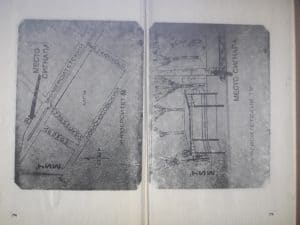
These illustrations come from the illustrative appendix of the manual. They however, do not necessarily apply to the described Filatov case in their entirety, and could be collected from similar cases.
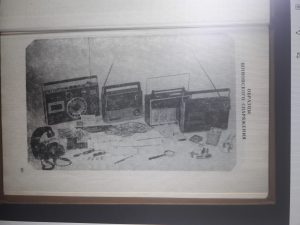
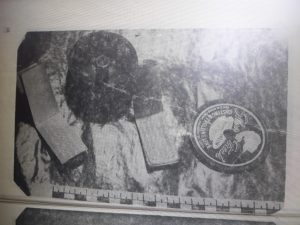
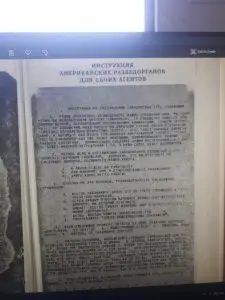
Full translation will be made later.
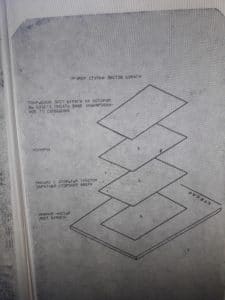
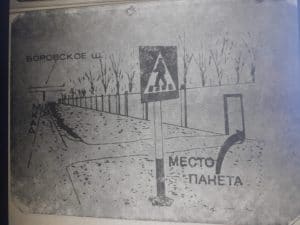
Original text and translation
by mg.hist Māris Goldmanis
Sources and Notes
[1] Goldmanis, Māris. Numbers Stations over Soviet Latvia: KGB counterintelligence monitoring of Western intelligence radio transmissions. Exclusive from the KGB archive. https://www.numbers-stations.com/articles/kgb-numbers-stations-archive/
[2] Goldmanis, Māris TRIGON Numbers Station: The Case of Alexandr Ogorodnik
[3] Некоторые вопросы организаций работы по сигналам и делам оперативного учета лиц причастий в шпионажу. Пособие для практических работников и слушателей учебный завединний КГБ СССР. Москва 1985.
[4] Doder, Dusko. Moscow Arrests Soviet Citizen as Agent of CIA. September 4. 1981. https://www.washingtonpost.com/archive/politics/1981/09/04/moscow-arrests-soviet-citizen-as-agent-of-cia/2d7fdfec-5ab1-4095-aa66-5653463f6468/
[5] The Rumor Factory in Washington: Case History Involves a Valued Spy. New York Times. September 23 1980.
[6] Myre, Gregg Moscow Rules’: How The CIA Operated Under The Watchful Eye Of The KGB
https://www.npr.org/2019/06/10/724099134/moscow-rules-how-the-cia-operated-under-the-watchful-eye-of-the-kgb?t=1598819549966
[7] Дэвид Э. Хоффман. Шпион на миллиард долларов. История самой дерзкой операции американских спецслужб в Советском Союзе. АСТ. Москва. 2015, c. 72.
[8] This decode of the transcripted message is sourced by the author to V. Treplin Colonel of Justice in book Треплин В. Запоздалое раскаяние. В кн.: Неотвратимое возмездие. С. 314–315, 1987.
[9] Завербуй меня, если сможешь. Фильм 2-й https://www.youtube.com/watch?v=wMxeckFuJV8
[10] Некоторые вопросы организаций работы по сигналам и делам оперативного учета лиц причастий в шпионажу. Пособие для практических работников и слушателей учебный завединний КГБ СССР. Москва 1985, c.41-53.
[11] RCI -Radio Counterintelligence
[12] Russian language used for operational broadcast – broadcasts with actual instructions is word “боевые” that means combat. In a peace time environment, however, it is more plausible to translate these messages as operational.
[13] The KGB documents called a single numbers stations broadcast a communication line as noted in Latvian KGB radio surveillance documents.
[14] The USSR central European side contained Belarus and modern day Russian Federation, within the Moscow district where most messages were forwarded.
[15] Filatov did not sent the letter to CIA center abroad under his name, but posed as tourist.
[16] Fake numbers station broadcasts were sometimes sent many months before the agent entered USSR, to mislead counterintelligence to believe there was already active agent within their territory.
[17] The usual praxis for official tourist trips and delegations was to include a KGB agent, either a guide or simple tour member to observe and control every member of the tour and delegation group.
[18] Signal case – KGB term for case based on agency messenger reports about suspicious soviet citizen activity
[19] These “mistaken calls” were usually made on time of radio message broadcast times to see if the US diplomat or agent he handles would not answer the phone during the broadcast
[20] Service within KGB responsible for monitoring USSR postal traffic
[21] Literal case – a KGB term for archival case about past operations
[22] Authority “K” Управление «К» – part of First Chief Directorate (foreig intelligence) now known as part of ministry of interior fighting cybercrimes.
[23] Military Counterintelligence division of the KGB
[24] Mordvins – an Uralian language group nation living in Mordovia, European side of Russia
[25] KPSS (КПСС) Communist Party of the Soviet Union
[26] Special modification was needed because apparently the Filatov’s radio receiver was not able to receive the radio broadcast in single side band mode, possibly USSR made radio with only AM option.

